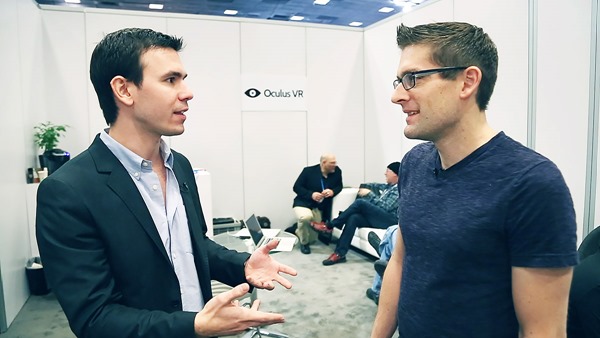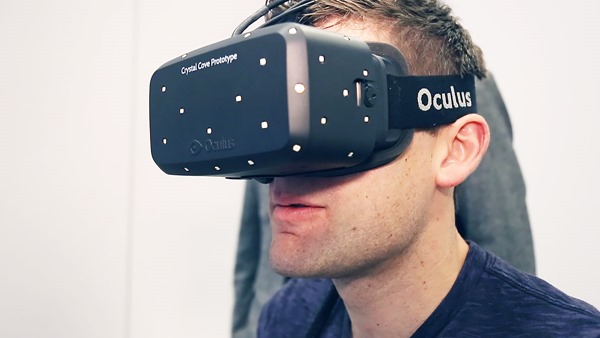CES 2013 was a strategic event for the VR and gaming industries as it was where Oculus VR showed the first Rift prototype. Called the “duct tape prototype” this device gave the world a preview into the technology that Oculus VR started via a Kickstarter project. I’ve had the opportunity to work with the Oculus Developer Kit, and also spent some time with the first Oculus HD Prototype at PAX this last year. So when I heard about Crystal Cove, I was really excited to both hear more about it and to try it out at CES 2014.
Discussing the future of VR in PC gaming with Oculus’ Nate Mitchell
At CES 2014, I was fortunate to have access to the private Oculus VR booth where I found Nate Mitchell, VP of Product. Nate and I talked for a while about the future of PC gaming, how VR fit into that picture, and how Oculus’ next wave of technology enables some of these forward-looking experiences and scenarios.
Crystal Cove brings several important capabilities and improvements to the table:
- Enhanced positional tracking: By using IR LEDs and an external camera, Crystal Cove models the user’s body position in powerful new ways. With these enhancements you can lean forward or lean to the side in a game and experience realistic environmental reactions. This opens up some exciting new possibilities in VR-based games, like the ability to look around a corner or to lean forward in a car to see the gages close-up.
- Increased display resolution: The original development kit splits a 720p display in half with each half dedicated to one eye. By splitting 1280×800 in half, each eye sees a 640×800 display surface. Crystal cove improves on this considerably by supporting full-HD resolution. With 1920×1080 split in half, each eye sees a 960×1080 surface. This equates to twice the number of pixels per eye for Crystal Cove compared with the 720p development kit. This increased resolution has a dramatic effect on the gaming experience because with split full HD resolution you can easily read the text on heads-up displays, dashboard gages, and other small things. The level of detail is much greater than the original development kit.
- Low persistence display updates: One of the key issues that Oculus has identified with VR display technology is the time delay between when you move your head or body and when the correct updated image gets displayed on the display. With OLED screen technology and some platform magic, Crystal Cove dramatically reduces this latency. The result is what Oculus calls “low persistence” which translates to a much more fluid VR experience. The key to achieving low persistence is to limit the time which outdated images are shown on the screen, and Oculus has found a way to achieve this effect so that immersion is greatly enhanced.
While this all sounds great, you can’t really describe how it feels until you try it in person. And after talking with Nate, I was certainly ready to give it a try!
Trying out the Oculus Crystal Cove prototype – I was blown away!
In the following video, I talk with Nate Mitchell about the Crystal Cove prototype, the related technological advancements that Oculus has built into Crystal Cove, and experience a demo of Crystal Cove with the EVE: Valkyrie game prototype:
The experience I had with Crystal Cove was awesome. It really feels like the technology that Oculus has developed is getting ready for prime time. I can only wait and hope for what Oculus will do in 2014. I am hoping I can get my hands on an updated version of the developer kit that I have. Only time will tell!
Find me on twitter! @GavinGear


